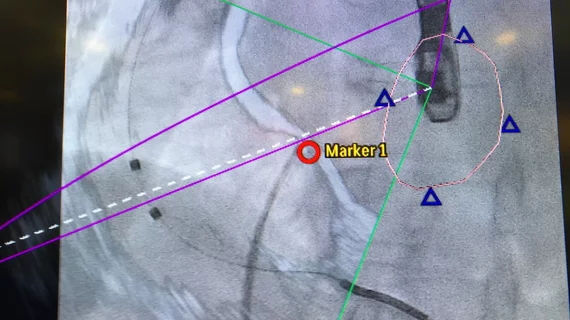New ASE guideline outlines training standards for interventional echocardiography
Interventional echocardiography (IE) is the primary imaging modality used to guide structural heart disease (SHD) interventions, such as transcatheter heart valve replacements, repairs, left atrial appendage occlusion and closure of holes in the heart. But successful procedure outcomes are highly dependent upon the skill of the echocardiography team operating alongside the interventional cardiologists as an integral part of the heart team. To ensure proper training of IEs, the American Society of Echocardiography (ASE) released a new guideline document that outlines uniform training standards.[1]
Recommendations for Special Competency in Echocardiographic Guidance of Structural Heart Disease Interventions provides guidance on all the primary aspects of training for cardiology and anesthesiology trainees, and post-graduate echocardiographers who plan to specialize in IE. The document outlines the requirements of the training institution, the duration and core competencies of training, minimal procedural volume for competency in IE, and knowledge of specific SHD procedures.
“SHD interventions rely on echocardiography before, during and after procedures,” said ASE President and Co-Chair of the guideline writing group Stephen H. Little, MD, FASE, said in a statement. “IE techniques are unique since imaging is performed in real-time, it is highly dependent on 3D and non-standard views, and it has immediate and profound implications for patient management. Additionally, IE requires candid, accurate and timely communication with other members of the multidisciplinary SHD team.”
As transcatheter structural heart interventions have increasingly become a standard of care, there have been calls for more constancy in how interventional echocardiographers are trained. Trancatheter aortic valve replacement (TAVR) procedures now make up more than 80% of aortic interventions in the U.S. Increasing numbers of mitral valve leaflet repairs are being performed by transcatheter clip devices. It is also widely expected that transcatheter tricuspid valves and clip devices will rapidly become a new standard of care once these devices start to see FDA clearance, possibly in the next year, since surgical outcomes are generally not great with this valve.
The ASE document addresses core competencies common to all transcatheter therapies, as well as specific transcatheter procedures. A core principle is that the length of IE training and achieved procedure volumes are less important than the demonstration of procedure-specific competencies within the milestone domains of knowledge, skill and communication, the document states.
“Transcatheter therapies for SHD continue to grow at a rapid pace, which means that the demand for skilled interventional echocardiographers has steadily increased,” added Vera H. Rigolin, MD, FASE, co-chair of the guideline writing group in the ASE issued statement. “Training standards are needed to ensure that interventional echocardiographers have the necessary expertise to provide fast, accurate and high-quality image acquisition and interpretation in real-time.”
This document is endorsed by 21 ASE international partners and was published in the April 2023 issue of the Journal of the American Society of Echocardiography (JASE).

